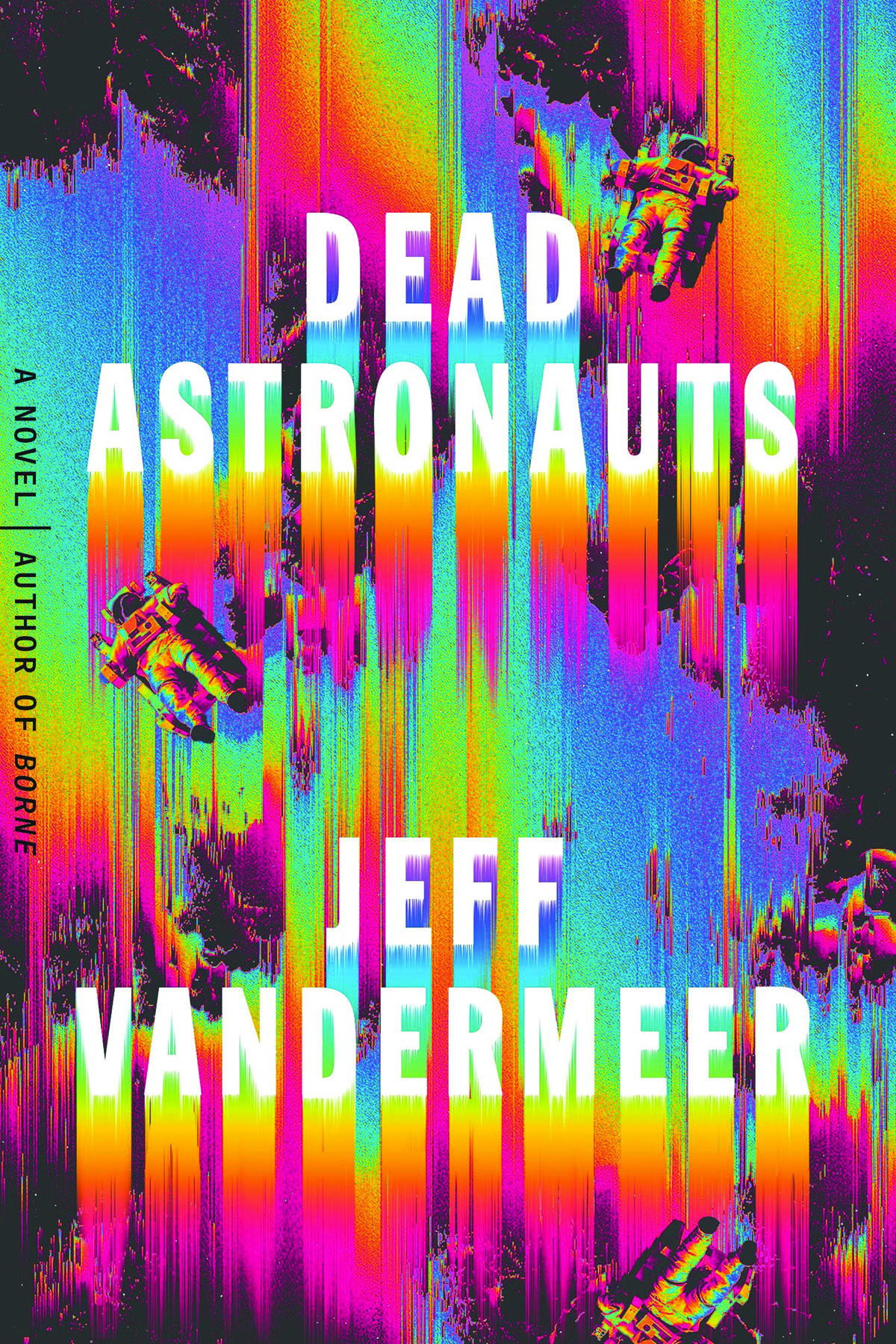Genre novels entail assembly. Information provided in the text builds on itself until it develops its own internal logic. The logic becomes the “world” of the book — and its parameters the axis of the plot. Robert Heinlein’s phrase, “The door dilated,” is often cited as a classically economical example of establishing the quotidian as futuristic. In Anathem, Neal Stephenson puts a full-blown pseudodictionary definition at the beginning of the first 50 chapters or so.
Jeff VanderMeer’s latest, Dead Astronauts, takes this particular string of science fiction DNA, unzips it, and never really puts it back together. The proceedings begin with a dialogue whose lines zigzag down the page with a seemingly random number in front of each quote. The first chapter has a version designation (3.1, like Windows) and details the doings of a leash of foxes about to encounter its messiah. The plot might not be clear, but the message is: VanderMeer has no intention of providing an orderly accumulation of sense to form a sensibility.

The titular dead astronauts enter next, three protagonists with varying degrees of humanity: Grayson, “a tall black woman of indeterminate age,” Chen, “a heavyset man from a country that was just a word now,” and Moss, a shape-shifting, semigodlike, plant-based entity. Their aim is to destroy a cross-time villain: the Company, a biotechnological firm dedicated, either directly or incidentally, to the environmental destruction of the universe. Like the gunslinger from Stephen King’s The Dark Tower series, the astronauts are on a journey through a desert, one among many in a multiverse, to get to a landmark that exists across dimensions. In this case, it’s a city (called simply “the City”) instead of a tower.
This somewhat classic opening is a bit of a head fake because both the genre and the narrative perspective are soon to change. At one point, the story is told by a genetically engineered duck with razor wings, designed to assassinate the enemies of the Company, that takes its orders from “murder control clicking like a switch flipped like a cut, like a blood-covered switch that clicked on.” At another point, we enter the mind of a leviathan fish, an escaped Company creation called Botch. There is a homeless derelict in a relatively near future. There is the sadistic madman scientist who made these creatures and more but was punished — first by his father and then by the Company.
Dead Astronauts is a short novel, so these jumps in perspective create a deliberately fractured narrative. The reader experiences the story at a remove, filtered through the profoundly broken psychologies of the characters — human, nonhuman, and in-between. It’s a creative decision that makes the action very slippery. At times, it is propulsive, pushing us inside these characters’ strange minds. At others, it’s jarring and somewhat obscure in spite of VanderMeer’s remarkable technique.
Yet this kaleidoscopic narration is far from the only weird thing about Dead Astronauts. Typographical tricks come thick and fast. There is a chapter where the story of the leviathan is relayed through a prose poem printed on pages that are four-fifths blank. There are entire sections that repeat text over and over again and add story only through intermittent parenthetical phrases, if at all. For instance, later in the novel, we hear the story of the fox messiah, who at one point briefly becomes human. One of these chapters begins like this:
These methods of fox demise, along with a few others, repeat for five pages. Not going to sugarcoat it — this was my personal limit for experimental storytelling. When VanderMeer did it again in a subsequent chapter, I paged ahead.
The suffering of the foxes also provides the justification for a healthy dose of misanthropic environmentalism, with the fox and his fellows exacting revenge on humans. At one point, the foxes torture a relatively innocent biologist and throw him into the wilderness to be torn apart by predators. One senses that VanderMeer intends this to come off as slightly tragic environmental rough justice, vulpine style, while attenuating the audience’s human chauvinism. Instead, I felt that if I wasn’t rooting for the foxes, I had failed an important moral test.
The novel’s one glimmer of redemption is the relationship among the astronauts, who share a space-time-transcending love that endures in spite of their repeated suffering and the apparent futility of their mission. It’s a flash of light in a dark universe, one that provides one of the few examples of sentimentality in a very tough book. When the astronauts die, we get a genuinely touching juxtaposition of the shared fragility of humanity and ecology and a suggestion that environmental degradation damages the perpetrator as much as the victim.
The novel has a coda, a poem ostensibly written on “a scrap of paper found in Chen’s suit.” I think it’s a happy ending. The clearest implication of the coda is that someone was around who cared enough to reach into a dead man’s pocket, find a piece of paper there, and unfold it to discover human words that still have meaning. But this is only a guess, and in the end, I’m not sure. Like its ending, Dead Astronauts can be looked at in one of two ways: as an intermittently dazzling and thoroughly disturbing piece of literary fiction, or as a writerly, self-serious work of sci-fi.
James Braid is a public policy professional and a former congressional staffer in Washington.

